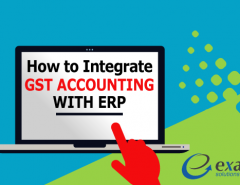An Assocham-Forrester study suggests that India has become a huge e-commerce hub with total projected revenue growth of INR 12,000 crores in 2020. This sector is said to have a 51% annual growth rate – something the world can look at in awe. In the recent past, steps taken by the Indian government such as that of demonetization and the push towards digital India has only further pushed the e-commerce sector towards a positive boost.
It is therefore needless to say that suppliers on the e-commerce platform are currently winners in the business game – they have easy access to remote customers, do not require location advantage that a regular supplier needs, their operational costs remain as low as ever, and they have massive scalability. E-commerce transactions have different tax liabilities arising basis the state the e-commerce platforms fall under, under the current indirect tax regime. Under the GST regime, however, suppliers are said to prospectively become uniform on the tax paying front. This article explores the consequence and impact of the GST regime on profit and operational costs that e-commerce suppliers will be subject to.
|
Impact |
Current Regime |
GST Regime |
| Input tax credit availability |
|
|
| Taxation finds uniformity |
|
|
| Registration as a necessity |
|
|
| Composite Scheme Levy |
|
|
| Impact of cash flow |
Max Traders (registered supplier on F&M) Max Traders supplies electronic products on F&M for INR 1,120 inclusive of VAT on June 1, 2017. Value of the product – 1,000 VAT – 120 Total sale price – 1,120 Commission – 20 The amount finally remitted to Max Traders – 1,000 |
Max Traders (registered supplier on F&M) Max Traders supplies electronic products on F&M for INR 1,120 inclusive of GST on June 1, 2017. Value of the product – 1,000 GST – 120 Total sale price – 1,120 Commission – 20 Tax Collected at Source – 20 The amount finally remitted to Max Traders – 1,080
|
In conclusion, suppliers on e-commerce platforms have a lot to look out for in terms of GST compliance. They have the option of availing input tax credit and are fortunate to have a single tax amount levied on products across states. However, suppliers are impacted by the tax collected at source and their tax collection is dependent on vendors filing compliances. An increase in compliance adherence for regular dealers (filing on a monthly basis), maintenance of records and books of accounts, and mandatory registration under the regime also add to supplier costs, irrespective of whether their aggregate turnover crosses the INR 5 lakh margin.
Nonetheless, business is said to become much easier under the GST regime for an e-commerce supplier with the advent of such uniformity. Supplies must prepare well to welcome the GST regime with open arms – they must be aware of all the compliances they have to undertake and how to use technology to their best of their advantage in order to capitalize on the onset of the new e-commerce era. Feel free to Contact Us.





Leave a Reply